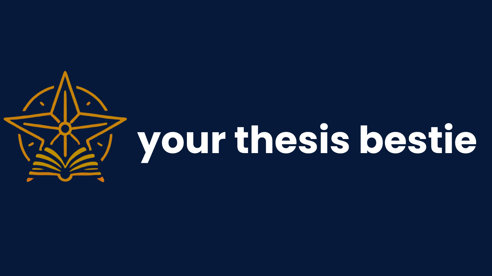The Behavioral and Marketing Implications of De-Influencing in Social Media Platforms
Explore the behavioral and marketing implications of de-influencing on social media platforms. Discover innovative research topic ideas that delve into the dynamics of influencing and its impact on user behavior and marketing strategies.
QUANTITATIVE AND QUALITATIVE RESEARCH
Realyn Manalo
5/27/20253 min read


In the age of hyper-connectivity, influencer marketing has emerged as one of the most powerful tools to shape consumer behavior. However, a growing counter-trend known as "de-influencing" is gaining traction across platforms like TikTok and Instagram. De-influencers—content creators who advise against unnecessary or unsustainable purchases—are challenging traditional promotional narratives by prioritizing authenticity, transparency, and conscious consumption. While brands once relied heavily on aesthetic appeal and aspirational lifestyles to drive engagement, de-influencers are disrupting this model by discouraging consumerism, exposing brand flaws, and questioning product value. The growing popularity of this movement raises crucial questions about how social media users respond to anti-consumption narratives, especially when such messages are amplified (or muted) by platform algorithms. This study seeks to explore how sustained exposure to de-influencing content affects consumer trust, purchase intentions, and brand perception across digital environments.
Who Can Use These Topics
This research is ideal for students and professionals pursuing the following courses or strands:
College Programs:
BSBA Marketing Management
BSBA Advertising and Public Relations
BA Communication
BSBA Entrepreneurship
Senior High School Strands:
Humanities and Social Sciences (HUMSS)
Accountancy, Business and Management (ABM)
General Academic Strand (GAS)
Why This Topic Needs Research
While existing studies shed light on the rise of de-influencing, several knowledge gaps remain:
Long-Term Behavioral Effects Remain Unexplored: Although Elhajjar and Itani (2025) confirmed that de-influencing messages affect consumer intentions, they did not investigate how sustained exposure influences long-term purchasing behavior or brand loyalty, particularly in algorithm-controlled digital spaces.
Algorithmic Influence Is Underexamined: While Plazibat and Marunica (2024) acknowledged that AI and platform algorithms shape deinfluencing visibility, they did not empirically explore how these systems determine which anti-consumption content gets amplified or buried—leaving critical gaps in understanding platform-level bias.
Cultural Variability Has Been Overlooked: Elsantil et al. (2025) emphasized the role of authenticity in deinfluencing but noted the absence of studies testing whether this mechanism holds true across cultural or geographic contexts, limiting the generalizability of findings.
Consumer Interpretation of Message Styles Is Unclear: Koivunen et al. (2025) introduced narrative and preachy styles as deinfluencing tactics, yet no empirical study has compared their effectiveness in driving actual consumer change or sustaining engagement over time.
Psychological and Identity Impacts Are Largely Untested: Ouellette (2024) critiqued the socio-political undertones of deinfluencing but did not empirically assess how these messages affect users’ self-perception, digital identity formation, or decision-making across repeated exposures.
TikTok Dynamics Require Further Evaluation: Ekvall and Mellberg (2023) introduced “re-influencing” as a reaction to deinfluencing but did not study how TikTok’s comment culture or content delivery mechanisms shape the perceived credibility and spread of these counter-messages.
Limited Product and Demographic Scope: Gennette (2024) studied Gen Z women and beauty products but called for broader research across different consumer profiles and product types to test whether deinfluencing generalizes beyond niche communities.
Feasibility & Challenges by Target Group
Get Your Free Thesis Title
Finding a well-structured quantitative research topic can be challenging, but I am here to assist you.
✔ Expertly Curated Topics – Not AI-generated, but carefully developed based on existing academic studies and research trends.
✔ Comprehensive Research Support – Includes an existed and updated research gaps, explanation of variables as well as SDG relevance.
✔ Personalized for Your Field – Get a thesis title tailored to your academic requirements and research interests.
Prefer video content? Subscribe to my YouTube Channel for expert insights on research topics, methodologies, and academic writing strategies.
References
Ekvall, M., & Mellberg, E. (2023). This is crap’Consumers’ experience of de-influencing on TikTok. interaction, 12(68).
Elhajjar, S., & Itani, O. S. (2025). Examining the impact of social media de-influencing on audiences. Internet Research.
Elsantil, Y., Sekar, S. B., Abo Hamza, E., & Bedair, K. (2025). From promotion to prevention: the influence of de-influencers on sustainable consumer behavioral intentions. Cogent Business & Management, 12(1), 2462271.
Gennette, A. G. (2024). Buying Was so Last Season: Persuasive Effects of Influencers Versus Deinfluencers on Purchase Intentions (Master's thesis, San Diego State University).
Koivunen, K., Haanpää, M. A. A., & Saraniemi, S. (2025). The emergence of cause-oriented influencers–conceptualizing de-influencing on TikTok. Journal of Business Research, 197, 115463.
Ouellette, C. (2024). Capstone Research Seminar Dr. Bednar April 1, 2024 What Is The Trend Of Deinfluencing Promoting? And Why?.
Plazibat, I., & Marunica, S. (2024). The impact of artificial intelligence and of the# deinfluencing trend on influencer marketing. Economic and Social Development: Book of Proceedings, 75-83.
